Ashly JPB-2016 Bruksanvisning
Les nedenfor 📖 manual på norsk for Ashly JPB-2016 (2 sider) i kategorien Høyttaler. Denne guiden var nyttig for 45 personer og ble vurdert med 4.4 stjerner i gjennomsnitt av 23 brukere
Side 1/2

JPB-2016 Common-Mode Speaker Line Filter
Introduction: The JPB-2016 Common Mode Speaker Line Filter is used to eliminate undesirable heterodyne tones caused by
capacitive coupling of multiple Class D power amplier outputs. Heterodyning is the combination of two or more frequencies to
create sum and difference tones, in this case within the audible range. Heterodyne tones can occur when output cables from more
than one Class D amplier are run close together over a long distance, even with no audio signal present. Ashly Class D ampliers
currently include all nX, NE two-channel, NE multi-channel, Pema, SRA, and TRA models. The JPB-2016 is wired using Neutrik®
speak-ON NL-2 or NL-4 type connectors.
Theory: The carrier signals on each output channel of an individual multi-channel Class-D amplier are typically synchronized, or
frequency “locked” to a single common carrier frequency (~ 300 KHz.). Therefore heterodyning between multiple channels of the
same physical amplier cannot occur. NOTE: The heterodyning mechanism is actually created by similar, but not exactly the same
high-frequency carrier signals feeding back into the outputs of each respective amplier. Those signals then interact inside the Class-D
amplier output stage which will then generate the heterodyne tones. i.e. If one amplier running a 300 MHz carrier leaks into the output
of another amplier running at 309 MHz, the ampliers can multiply those two signals together creating both sum and difference tones,
with the difference tone being only 9 KHz, which is within the range of hearing. (Sounding a little like an old AM radio.)
The JPB-2016 common-mode speaker line lter rejects high-frequency signals coming back into the power amplier output, not the
reverse. Because both + & - speaker lines are acting as antennas, and the 300 MHz carriers capacitively couple equally into both sides
of the speaker line, one good way to reject an incoming high-frequency carrier is to place a common-mode lter at the output which
will have virtually no effect on the differential-mode signal traveling from the amplier to the speaker, but will block common-mode
interference coming back into the amplier.
Because different “Model Series”, and brands of ampliers will most likely operate at different carrier frequencies, at least greater
than 20 KHz apart, the difference tones that high cannot be heard. The heterodyne tone problem is most often observed when running
multiple individual ampliers of the same exact model series, and then running their speaker lines closely together within the same
conduit or wire bundle for long-distance runs which will increase the capacitive crosstalk coupling between the speaker lines.
This is because running the speaker wires close together creates a capacitor. The longer the run the higher the capacitive coupling from
one line to another, and thereby one amp to another. This effect has been observed with closely bundled speaker lines running distances
as short as 75 feet but more typically occurs at lengths of 200 feet or more. NOTE: In all but the shortest speaker lines, separate Class-D
ampliers should NEVER share a common multi-core speaker cable. Multi-core speaker wire will maximize high-frequency crosstalk (i.e.
at 300 MHz) as distance increases, potentially exacerbating the problem of heterodyning between the ampliers. Multi-core speaker wire
will work perfectly ne in the audio range, and will not create the potential for heterodyning when wired from a single Class-D multi-
channel amp (2, 4, 8, channels etc), however using multi-core speaker wire with separate Class-D ampliers where the carrier frequencies
may not be synchronized greatly increases the risk of heterodyne tones.
Produkspesifikasjoner
| Merke: | Ashly |
| Kategori: | Høyttaler |
| Modell: | JPB-2016 |
Trenger du hjelp?
Hvis du trenger hjelp med Ashly JPB-2016 still et spørsmål nedenfor, og andre brukere vil svare deg
Høyttaler Ashly Manualer

27 Oktober 2024
Høyttaler Manualer
- Avantree
- Monster
- Bearware
- Bose
- Phoenix Gold
- Karcher
- Livoo
- Blue Tees
- AudioControl
- Califone
- Helix
- VTech
- Transparent
- Klark Teknik
- Lenco
Nyeste Høyttaler Manualer

23 Oktober 2025

21 Oktober 2025
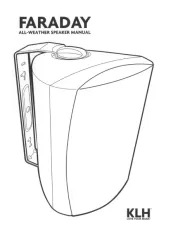
21 Oktober 2025
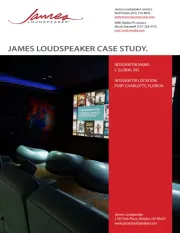
20 Oktober 2025
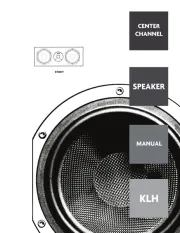
20 Oktober 2025

20 Oktober 2025
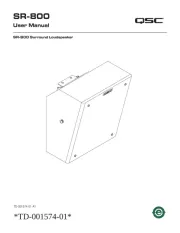
20 Oktober 2025
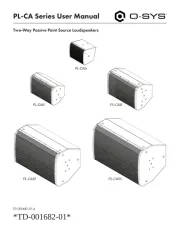
20 Oktober 2025
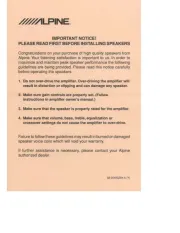
20 Oktober 2025
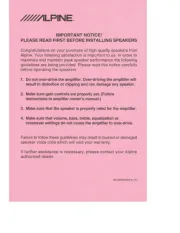
20 Oktober 2025